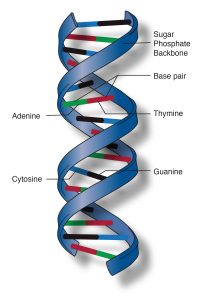What is the full form of DNA
What is the full form of DNA
DNA: Deoxyribonucleic Acid
DNA stands for Deoxyribonucleic Acid. It is the hereditary material in humans and almost all other organisms. Nearly every cell in a person’s body has the same DNA.
It contains the genetic instructions for the development and functioning of an organism. These instructions are passed from one generation to the next generation. DNA is present in the nucleus of each cell of the body and the genetic instructions are stored in the form of codes made of 4 nitrogen bases; Adenine (A), Cytosine (C), Guanine (G) and Thymine (T).

Human DNA consists of about 3 billion bases, and more than 99 percent of those bases are the same in all people. The order, or sequence, of these bases determines the information available for building and maintaining an organism, similar to the way in which letters of the alphabet appear in a certain order to form words and sentences.
DNA bases pair up with each other, A with T and C with G, to form units called base pairs. Each base is also attached to a sugar molecule and a phosphate molecule. Together, a base, sugar, and phosphate are called a nucleotide. Nucleotides are arranged in two long strands that form a spiral called a double helix. The structure of the double helix is somewhat like a ladder, with the base pairs forming the ladder’s rungs and the sugar and phosphate molecules forming the vertical sidepieces of the ladder.
An important property of DNA is that it can replicate, or make copies of itself. Each strand of DNA in the double helix can serve as a pattern for duplicating the sequence of bases. This is critical when cells divide because each new cell needs to have an exact copy of the DNA present in the old cell.